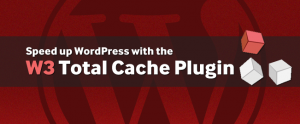 Configuring W3 Total Cache Settings?
Configuring W3 Total Cache Settings?
W3 total cache configuration could be a bit confusing if you are a WordPress beginner or using this plugin for the first time. To make things easier for you, I have included the XML/PHP File containing all the w3 total cache settings. You can simply import all the settings by uploading the file via Performance -> General Settings -> Import / Export Settings (at the bottom). Still, here are all the settings step by step:
1. W3TC General Settings
Page Cache – Enabled
Page Cache Method – Disk Enhanced
Minify – Enable
Minify Mode – Manual
Minify Cache Method – Disk
Database Cache – Enabled
Database Cache Method- Disk
Object Cache – Disable
Browser Cache – Enable
CDN – Enable if you are using a CDN service else Disable
Varnish – Disable
Network Performance by Cloudfare – Enable if you use Cloudfare else Disable
2. W3TC Page Cache Settings
Page Cache – General
Cache home page – Check
Cache feeds: site, categories, tags, comments – Check (Blogs running Feedburner – Uncheck)
Cache SSL (https) requests – Check
Cache URIs with query string variables – Uncheck
Cache 404 (not found) pages – Uncheck
Cache requests only for webloggerz.com hostname – Check
Don’t cache pages for logged in users – Check
Page Cache – Advanced
No Changes
Page Cache – Cache Preload
Automatically Prime the Page Cache – Checked
Update Interval – 900
Pages per interval -10
Sitemap URL – URL of your blog’s xml sitemap. E.g. http://example.com/sitemap.xml
Page Cache – Purge Policy
No changes
3. W3TC Minify Settings
Minify can increase your site speed by removing the unnecessary comments and spaces from your html source files. Please keep in mind that this function may cause crash of your site sometimes. I would recommend you to consult your dedicated server wordpress hosting provider before using this function.
Minify Settings – General
Rewrite URL structure – Check
Minify Settings – HTML and XML
Enable – Check
Inline CSS minification – Check
Inline JS minification – Check
Don’t minify feeds – Check
Line break removal – Uncheck
Minify Settings – JS
JS minify settings – Check
All other options – Uncheck
Minify Settings – CS
CSS minify settings – Enable
Combine only – Disable
Preserved comment removal – Disable
Line break removal – Enable
Minify Settings – Advanced
No change
W3TC Database Cache
No changes
W3TC Object Cache
No changes
4. W3TC Browser Cache
Browser Cache – General Settings
Set expires header – Check
Set cache control header – Check
Set entity tag (eTag) – Uncheck
Set W3 Total Cache header – Check
Enable HTTP (gzip) compression – Check
Prevent caching of objects after settings change – Uncheck
Do not process 404 errors – Uncheck
Browser Cache – CSS & JS
Set expires header – Check
Expires header lifetime – 31536000 seconds
Set cache control header – Check
Cache Control Policy: cache with max-age
Set entity tag (eTag) – Uncheck
Set W3 Total Cache header – Check
Enable HTTP (gzip) compression – Check
Prevent caching of objects after settings change – Disable
Browser Cache – HTML and XML
Set expires header – Check
Expires header lifetime – 3600 seconds
Set cache control header – Check
Cache Control Policy: cache with max-age
Set entity tag (eTag) – Uncheck
Set W3 Total Cache header – Check
Enable HTTP (gzip) compression – Check
Browser Cache – Media and other files
Set expires header – Enable
Expires header lifetime – 31536000 seconds
Set cache control header – Enable
Cache Control Policy – cache with max-age
Set the entity tag (eTag) – Disable
Set W3 Total Cache header – Enable
Enable HTTP (gzip) compression – Enable
5. W3TC User Agents Group & Referrer Groups
No changes
6. W3TC CDN
No changes for non CDN users.
After configuring all the settings, Go back to General Settings & Hit Deploy. You will see a new message – “Preview settings deployed”. Click Disable to disable to preview mode and then click Empty all Cache.
Finally, you are done and have successfully configured w3 total cache optimal settings on your blog.
Check if the plugin is configured and optimized properly?
If you have followed all the above steps, the plugin would be configured properly. To check if the plugin is working correctly, open the Html source code of any web page of your website (Right Click -> View Source) and look for this line:
<!– Performance optimized by W3 Total Cache. Learn more: http://www.w3-edge.com/wordpress-plugins/ –>
to confirm its proper working. To confirm the speed optimization of your website after installing this plugin; Go to Pingdom Tools and check the speed of your website once again. Mine website speed jumped to 83% from 22% earlier. I am sure that it will be increased for yours too.